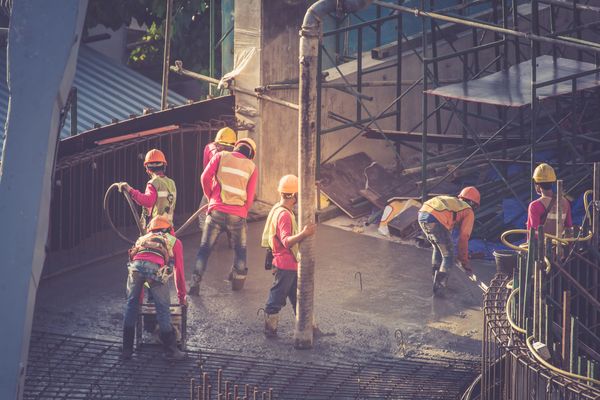4.6.3
Metals: Shape & Form
Shapes & Form
Shapes & Form
Metals can have various shapes and forms, depending on their intended use.


Sheets and plates
Sheets and plates
- Metals can be produced in flat, thin sheets of varying thickness.
- Sheets are used for roofing, cladding, and fabrication of metal parts.
- Plates are thicker and more substantial than sheets.
- Plates are used in structural applications:
- Construction.
- Shipbuilding.
- Manufacturing of heavy machinery.


Wires
Wires
- Metal wires have a thin and elongated form.
- Wires are used for:
- Electrical wiring.
- Telecommunications.
- Fencing.
- Wires are also in various industrial applications:
- Springs.
- Mesh.


Bars and rods
Bars and rods
- Metal bars are solid, long, and have a circular or rectangular cross-section.
- Bars are used as structural elements and support beams.
- Bars are also used for manufacturing machine components.
- Rods are similar to bars but are usually thinner in diameter.
- Rods are used in construction, electrical wiring, and concrete structures.


Profiles
Profiles
- Metal profiles are specific shapes that are extruded or formed to have consistent cross-sections.
- Examples of profiles include:
- I-beams.
- C-channels.
- Angles.
- T-sections.
- Profiles are used in construction, infrastructure, and manufacturing.


Tubes and pipes
Tubes and pipes
- Tubes have a hollow cylindrical shape.
- Tubes are used in plumbing, heating systems, and structural frameworks.
- Pipes also have a hollow cylindrical shape.
- Pipes come in various diameters and wall thicknesses.
- Pipes are used for the transportation of fluids or gases.
- Pipes are made from metals like steel, copper, or aluminium.
1Core Technical Principles
1.1New & Emerging Technologies
1.2Energy Generation & Storage
1.3Developments in New Materials
1.4Systems Approach to Designing
1.5Mechanical Devices
1.6Materials Categories
2Paper & Board: Specialist Technical Principles
2.1Selection of Materials
2.2Paper & Board: Forces & Stresses
2.3Paper & Board: Ecological & Social Footprint
2.4Paper & Board: Sources & Origins
2.5Paper & Board: Using Materials
2.6Paper & Board: Stock Forms, Types & Sizes
2.7Paper & Board: Scales of Production
2.8Paper & Board: Specialist Techniques & Processes
2.9Paper & Board: Surface Treatments & Finishes
3Timber: Specialist Technical Principles
3.1Timber: Selection of Materials
3.2Timber: Forces & Stresses
3.3Timber: Ecological & Social Footprint
3.4Timber: Sources & Origins
3.5Timber: Using Materials
3.6Timber: Stock Forms, Types & Sizes
3.7Timber: Scales of Production
3.8Timber: Specialist Techniques & Processes
3.9Timber: Surface Treatments & Finishes
4Metal: Specialist Technical Principles
4.1Metals: Selection of Materials
4.2Metals: Forces & Stresses
4.3Metals: Ecological & Social Footprint
4.4Metals: Sources & Origins
4.5Metals: Alloy-Based Materials
4.6Metals: Using Materials
4.7Metals: Scales of Production
4.8Metals: Specialist Techniques & Processes
4.9Metals: Quality Control
4.10Metals: Surface Treatments & Finishes
5Polymers: Specialist Technical Principles
5.1Polymers
5.2Polymer Categories
5.3Polymer Forms
5.4Polymer Production, Techniques & Quality Control
6Textiles: Specialist Technical Principles
6.1Textile Materials
6.2Selection of Materials
6.3Forces & Stresses
7Designing & Making Principles
7.1Investigation & Data
7.2Environmental, Social & Economic Challenges
7.3The Work of Others
7.4Design Strategies
7.5Communication of Design Ideas
7.6Prototype Development
7.7Selection of Materials
7.8Tolerances
7.9Material Management
7.10Specialist Equipment
7.11Specialist Techniques & Processes
Jump to other topics
1Core Technical Principles
1.1New & Emerging Technologies
1.2Energy Generation & Storage
1.3Developments in New Materials
1.4Systems Approach to Designing
1.5Mechanical Devices
1.6Materials Categories
2Paper & Board: Specialist Technical Principles
2.1Selection of Materials
2.2Paper & Board: Forces & Stresses
2.3Paper & Board: Ecological & Social Footprint
2.4Paper & Board: Sources & Origins
2.5Paper & Board: Using Materials
2.6Paper & Board: Stock Forms, Types & Sizes
2.7Paper & Board: Scales of Production
2.8Paper & Board: Specialist Techniques & Processes
2.9Paper & Board: Surface Treatments & Finishes
3Timber: Specialist Technical Principles
3.1Timber: Selection of Materials
3.2Timber: Forces & Stresses
3.3Timber: Ecological & Social Footprint
3.4Timber: Sources & Origins
3.5Timber: Using Materials
3.6Timber: Stock Forms, Types & Sizes
3.7Timber: Scales of Production
3.8Timber: Specialist Techniques & Processes
3.9Timber: Surface Treatments & Finishes
4Metal: Specialist Technical Principles
4.1Metals: Selection of Materials
4.2Metals: Forces & Stresses
4.3Metals: Ecological & Social Footprint
4.4Metals: Sources & Origins
4.5Metals: Alloy-Based Materials
4.6Metals: Using Materials
4.7Metals: Scales of Production
4.8Metals: Specialist Techniques & Processes
4.9Metals: Quality Control
4.10Metals: Surface Treatments & Finishes
5Polymers: Specialist Technical Principles
5.1Polymers
5.2Polymer Categories
5.3Polymer Forms
5.4Polymer Production, Techniques & Quality Control
6Textiles: Specialist Technical Principles
6.1Textile Materials
6.2Selection of Materials
6.3Forces & Stresses
7Designing & Making Principles
7.1Investigation & Data
7.2Environmental, Social & Economic Challenges
7.3The Work of Others
7.4Design Strategies
7.5Communication of Design Ideas
7.6Prototype Development
7.7Selection of Materials
7.8Tolerances
7.9Material Management
7.10Specialist Equipment
7.11Specialist Techniques & Processes
Unlock your full potential with Seneca Premium
Unlimited access to 10,000+ open-ended exam questions
Mini-mock exams based on your study history
Unlock 800+ premium courses & e-books